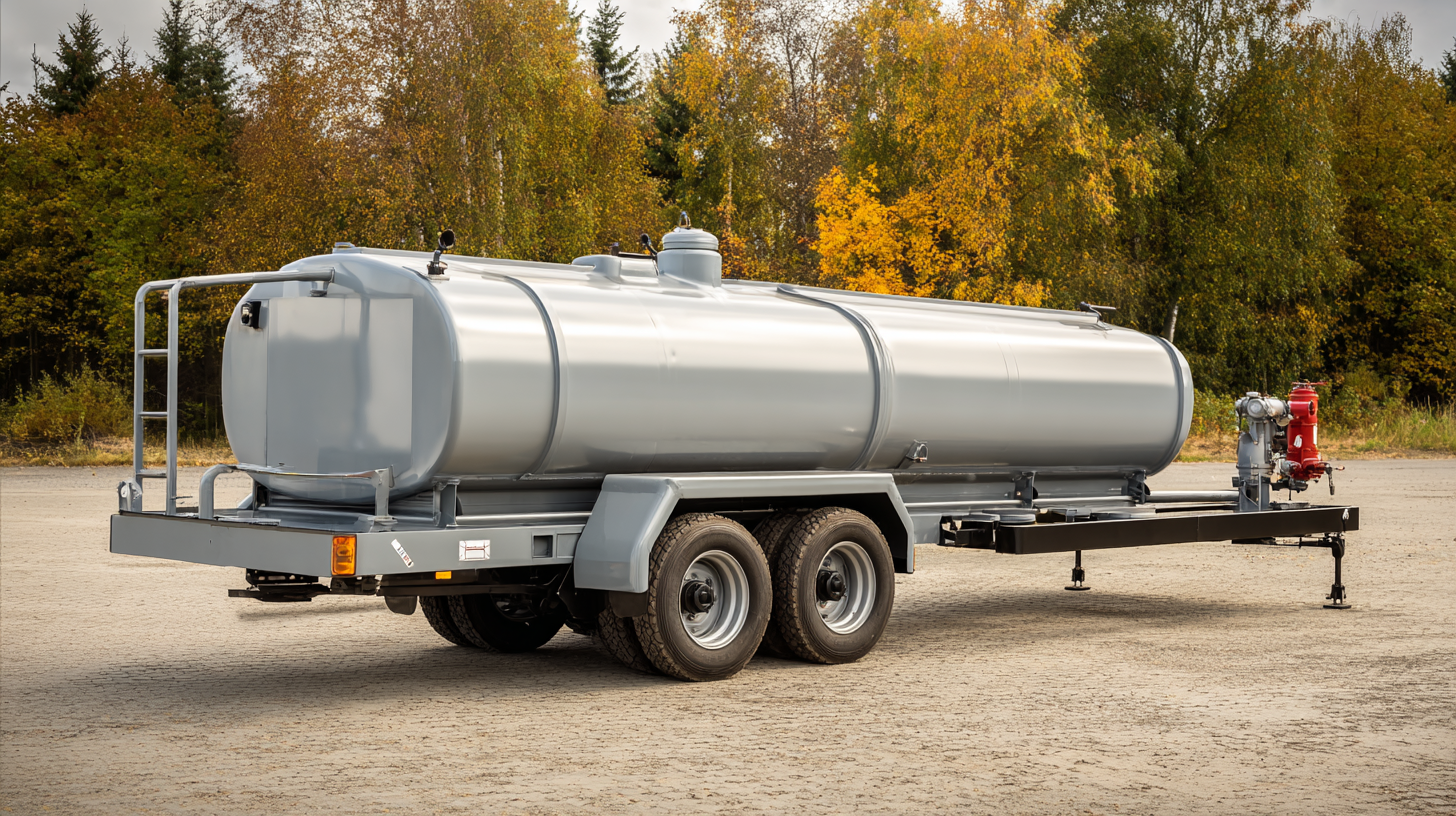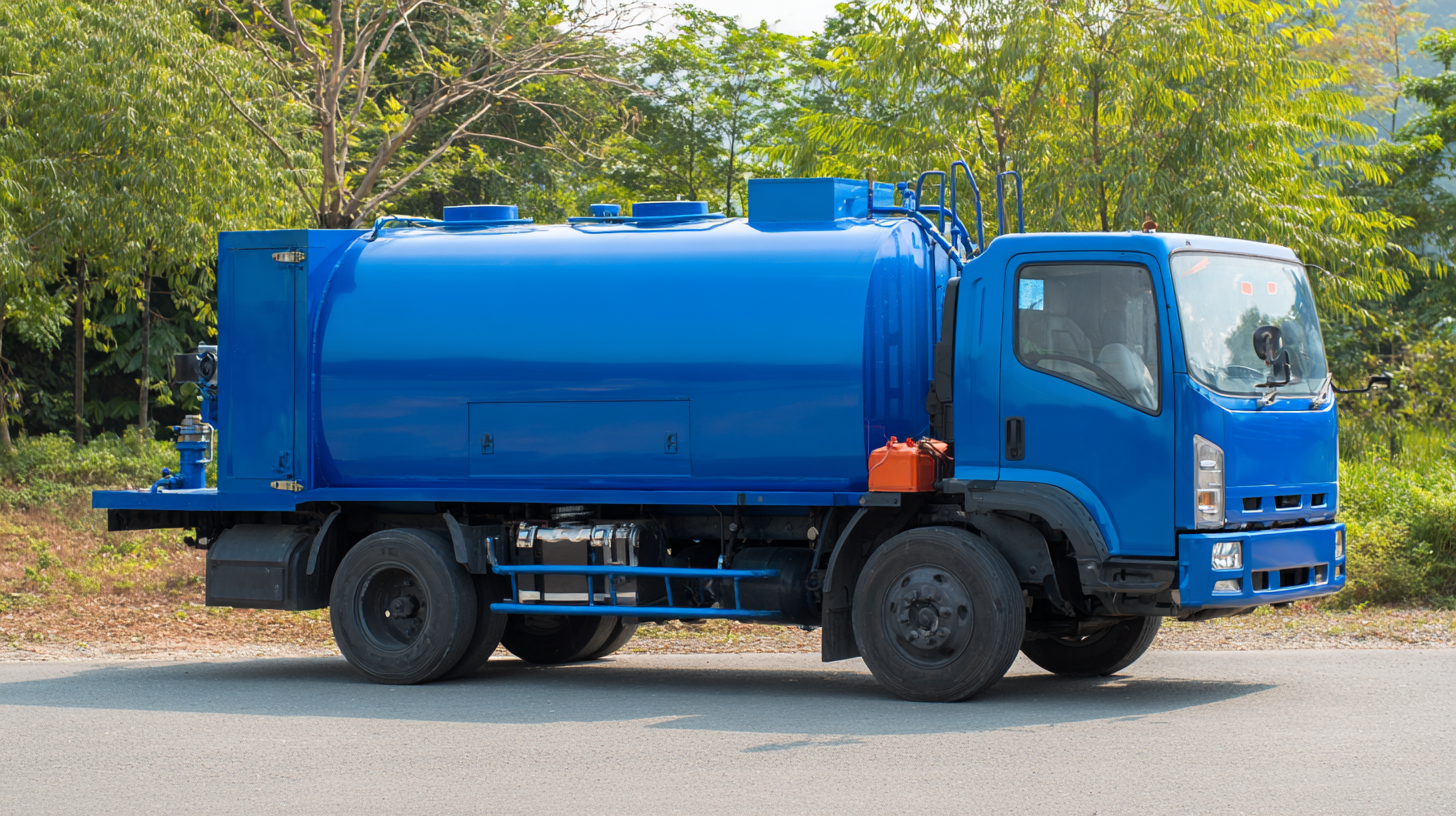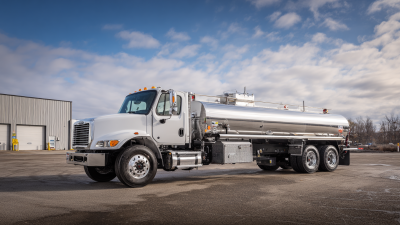How to Choose the Best Diesel Transfer Tank with Pump for Your Needs in 2025
When it comes to fueling your machinery or vehicles efficiently, a diesel transfer tank with pump is an essential investment. With the increasing demand for reliable and effective fuel transfer solutions in 2025, selecting the right diesel transfer tank can significantly impact your operations, whether you are a contractor, a farmer, or simply a diesel-powered vehicle owner. Understanding the various types of tanks available, their features, and the specific needs of your application is crucial in making an informed decision.
In this guide, we will explore the key considerations for choosing the best diesel transfer tank with pump that suits your requirements. From capacity and portability to safety features and compliance with regulations, we will break down the factors that influence your purchase. Additionally, we will highlight the importance of selecting a tank that not only meets your current needs but also allows for future scalability as demands may evolve. By the end of this article, you will be equipped with the knowledge to make an informed choice that maximizes efficiency and ensures the seamless transfer of diesel fuel for your operations.

Understanding the Different Types of Diesel Transfer Tanks Available in 2025
When selecting a diesel transfer tank in 2025, understanding the types available is crucial for making an informed decision. The market currently offers several categories of diesel transfer tanks, including portable tanks, stationary tanks, and those with specific pumps for various applications. According to a recent report by the Diesel Equipment Institute, portable tanks have seen a 15% increase in demand over the past year, largely due to their versatility for on-site fueling in both automotive and agricultural sectors.
Portable tanks typically range in capacity from 50 to 500 gallons, making them ideal for smaller operations or field work. On the other hand, stationary tanks, often with capacities exceeding 1,000 gallons, are better suited for commercial or industrial settings. The American Petroleum Institute highlights that these large tanks play a significant role in efficiency, especially as fuel regulations tighten and the need for compliance becomes paramount. Additionally, many tanks now come equipped with integrated pumps, featuring advanced technology that ensures accurate and safe fueling, reflecting a broader industry trend towards automation and safety enhancements.
Considering these options, buyers should also weigh the benefits of additional features like monitoring systems and anti-spill designs, which are becoming increasingly common across all tank types. As the diesel market evolves, aligning tank selection with specific operational needs will help ensure optimal performance and compliance in 2025 and beyond.
How to Choose the Best Diesel Transfer Tank with Pump for Your Needs in 2025
| Tank Type | Capacity (Gallons) | Pump Flow Rate (GPH) | Material | Portability | Price Range ($) |
|---|---|---|---|---|---|
| Portable | 30 | 10 | Steel | High | 150-250 |
| Stationary | 100 | 20 | Polyethylene | Low | 400-600 |
| Combination | 50 | 15 | Aluminum | Medium | 300-500 |
| Heavy-Duty | 200 | 25 | Steel | Low | 800-1200 |
| Compact | 20 | 8 | Polyethylene | High | 100-200 |
Key Features to Consider When Selecting a Diesel Transfer Tank with Pump
When selecting a diesel transfer tank with a pump, it's crucial to consider key features that ensure efficiency and 安全性. One of the foremost aspects is the tank's capacity. Depending on your needs, whether for personal use or commercial operations, you'll want a size that accommodates your fuel requirements without being cumbersome. Additionally, materials used in construction, such as heavy-duty steel or polyethylene, should be evaluated for durability and resistance to environmental factors.

Another important feature is the pump type and its flow rate. Electric pumps offer convenience and quick delivery, while manual pumps are often more affordable. Ensure that the pump's transfer rate meets your fueling speed requirements. Also, consider safety features, such as automatic shut-off valves and secure venting systems, to prevent spills and leaks. Lastly, portability can be a deciding factor; look for tanks that are designed for easy transport or those that can be securely mounted to your vehicle or trailer. These features collectively will help you make an informed decision that suits your specific needs.
Assessing Your Fuel Transfer Needs: Size, Capacity, and Pump Performance
When selecting the best diesel transfer tank equipped with a pump, it is essential to first assess your specific fuel transfer needs. Consider the size and capacity of the tank that best suits your operations. If you frequently transport large volumes of diesel for machinery or vehicles, a tank with a higher capacity is advisable. However, if your requirements are more modest, a smaller tank may suffice, providing convenience without unnecessary bulk.
Equally important is the performance of the pump. The flow rate of a pump influences how quickly you can transfer fuel, directly impacting your operational efficiency. Evaluate the horsepower of the pump and ensure it aligns with the demands of your tasks. Additionally, consider features such as automatic shut-off nozzles and self-priming capabilities, which can enhance safety and streamline fuel transfer processes. By carefully assessing these factors, you can make an informed decision on the best diesel transfer tank with a pump tailored to your needs in 2025.
Diesel Transfer Tank Performance Comparison (2025)
Comparing Safety Standards and Regulations for Diesel Transfer Tanks
When selecting a diesel transfer tank with a pump, it is crucial to prioritize safety standards and regulations, which continue to evolve with advancements in technology and environmental considerations. In 2025, various jurisdictions will likely enforce stricter compliance measures focused on preventing spills, leaks, and unintended emissions. Understanding the specific regulations that apply to your region can help avoid costly fines and ensure that your operation adheres to the best practices in diesel transport and storage.
Moreover, safety features such as integrated spill containment, robust ventilation systems, and reliable overfill protection are essential components to look for in a diesel transfer tank. Tanks that meet standards set by organizations like the EPA or local safety authorities should be preferred, as these certifications signify that the tank has undergone rigorous testing to ensure safe operation. As environmental concerns become more pressing, investing in a compliant tank not only protects the surroundings but also helps build a responsible business image.

Budget Considerations: Cost vs. Quality in Diesel Transfer Tanks for 2025
When selecting a diesel transfer tank with a pump, budget considerations play a crucial role in ensuring you make a wise investment. In 2025, many options are available at varying price points, but it’s essential to weigh cost against quality. Cheaper models may tempt buyers initially, but they often compromise on durability and performance. Investing in a higher-quality tank can lead to long-term savings, as these tanks typically come with reliable pumps, better materials, and enhanced safety features, reducing the likelihood of repairs or replacements.
Moreover, understanding your specific needs can help you navigate the cost-quality equation effectively. For instance, if you regularly transport diesel for commercial purposes, opting for a robust tank designed for heavy use may justify higher costs. Conversely, for infrequent, light-duty tasks, a more budget-friendly tank could meet your requirements without overspending. Ultimately, it's vital to evaluate not just the upfront costs, but also the potential long-term benefits and how they align with your usage patterns.
Balancing quality and affordability will ensure you choose a diesel transfer tank that serves your needs efficiently in the years to come.
Related Posts
-

7 Reasons to Choose a Diesel Transfer Tank with Pump for Your Business
-

Understanding the Benefits of Using Above Ground Diesel Storage Tanks in Various Industries
-

5 Best Diesel Fuel Tank Solutions for Your Business Efficiency
-

Why Understanding Diesel Tanks is Essential for Your Business Operations
-

Understanding the Benefits of a Diesel Transfer Tank with Pump for Efficient Fuel Management
-

Maximizing Efficiency: The Ultimate Guide to Choosing the Right Diesel Transfer Pump for Your Needs